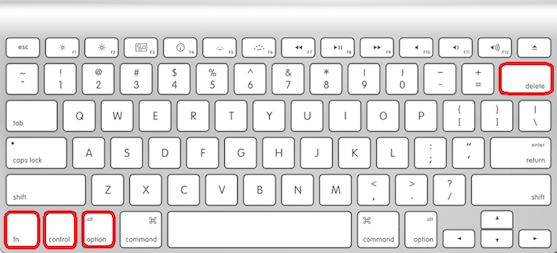

- #Alt r mac os not working how to#
- #Alt r mac os not working for mac os x#
- #Alt r mac os not working password#
- #Alt r mac os not working windows#
#Alt r mac os not working password#
Sorry!Īnyway, using this tool, you’ll be able to change your password to something you know.
#Alt r mac os not working how to#
I’d show this menu as a screenshot here, but can’t figure out how to get a screenshot of the install process. One of those menus is Utilities and one of the choices on that menu is Reset Password….
#Alt r mac os not working windows#
Click on it, and your PowerBook will restart and go straight to the install process.īut don’t install the OS again! Just click through windows far enough until you get the regular set of choices on the menu bar. Once you have an install disk in hand, double click on the Install Mac OS icon and you’ll get a window with a big graphic (this is one place where Apple isn’t subtle!) and a restart button. You might also ask yourself if you need to run Tiger, or whether Panther would work for you – it’d be a lot cheaper.
#Alt r mac os not working for mac os x#
One smart way to accomplish this: look for Mac OS X on eBay. If you don’t have this disk, then your best bet is to buy a copy of Mac OS X, even though you already have the OS installed on your computer (you could try calling Apple (800 SOS-APPL) and asking for a replacement boot disk too). The key to unlocking your system is the Mac OS X install disk. If you don’t recall setting up such a password, well, you probably didn’t.Īfter entering any required passwords, the macOS Utilities window should appear.I bet you’ll be surprised how easy it is to change the administrator (known in Unix parlance as “root”) password on a Mac OS X Tiger, Panther, etc., computer. A firmware password prevents starting up from any internal or external storage device other than the startup disk you’ve selected. You may have to enter a password, such as a firmware password or the password of the user who’s an administrator of the Mac.

Startup is complete when you see the utilities window. Continue holding the keys down until you see the Apple logo or a spinning globe. To use macOS Recovery on an Intel-based Mac, hold down Command (⌘)-R on your keyboard immediately after restarting your Mac or immediately after your Mac begins to restart. MacOS Recovery Mode on an Intel-based Mac From a shutdown state, double-press and hold the power button to boot into Fallback recovery OS. However, it won’t allow you to change the system security state - which most of us probably shouldn’t mess with anyway. It’s the same process as recoveryOS boot, except that it boots to a second copy of recoveryOS that, in Apple’s words, “is kept for resiliency.” If macOS Recovery Mode didn’t solve your problems, you can give “Fallback recovery OS” a try. Choose “Apple menu () > Startup Disk.” To quit the app, choose Startup Disk > Quit Startup Disk.

Use this one with care! In the Recovery app window, select Disk Utility, then click Continue.


 0 kommentar(er)
0 kommentar(er)
